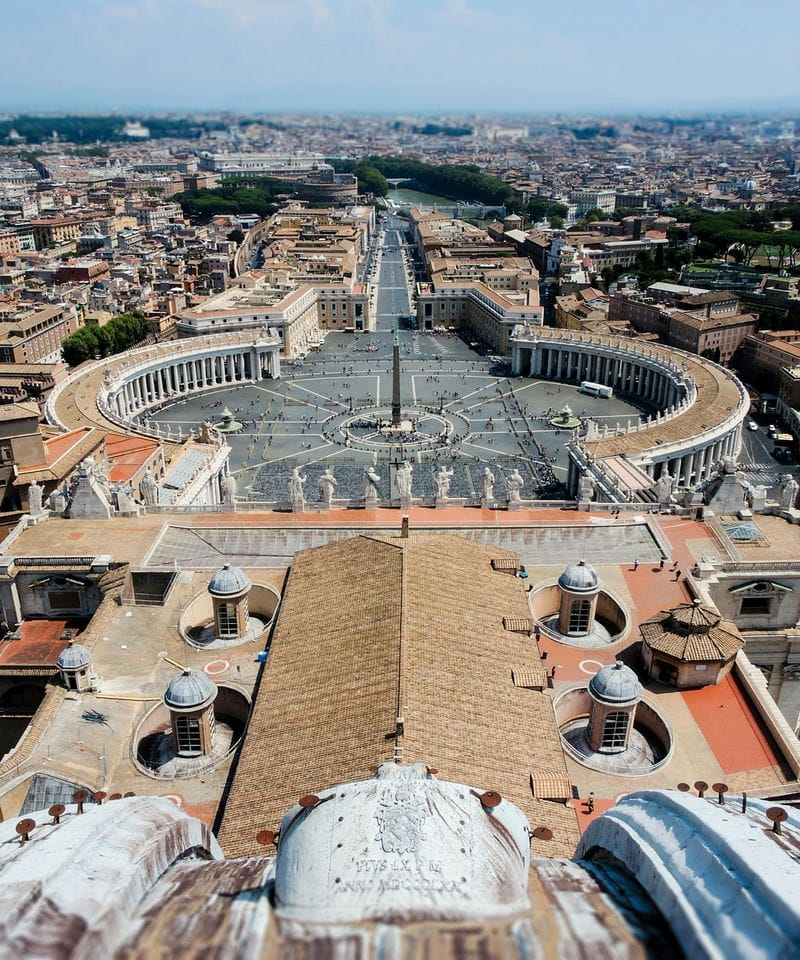
Weather in Italy in February: A Crisp Insider's Guide
Key Takeaways
- The weather in Italy in February has varying patterns across northern, central, and southern regions.
- Northern Italy tends to be colder, with snowfall in the mountainous areas, while central and southern Italy are milder, with moderate temperatures.
- Travelers should consider historical weather patterns and geographic regions when planning a trip to Italy in February.

Just like October in Italy marks the fall season, January and February mark the wintertime in Italy, with varying weather conditions across the country.
While it is not the peak tourist season, it presents an opportunity for travelers seeking a less crowded experience in this popular destination.
Italy is characterized by a diverse climate, with northern, central, and southern regions experiencing different weather phenomena in February.
In the northern region of Italy, cities like Milan, Turin, and Venice experience cold temperatures ranging from freezing to 10°C (32-50°F).
In these areas, snowfall is common, particularly in the Alps and the Dolomites, which cover a significant portion of the north.
The central region, including cities like Rome, has moderate temperatures around 14°C (57°F) during the daytime and 8°C (46°F) at night, with tolerable weather conditions overall.
Southern Italy tends to be milder in temperature, offering a somewhat warmer experience in February compared to the northern parts of the country. It comes closer to the weather in Italy in March, and the weather in Italy in April.
Coastal regions and mountainous areas in Italy will also have varying weather in February, and it's essential for travelers to be aware of historical weather patterns to plan their visits accordingly.
Proper planning and preparation make visiting Italy in February a unique and memorable experience.
General Climate in Italy in February
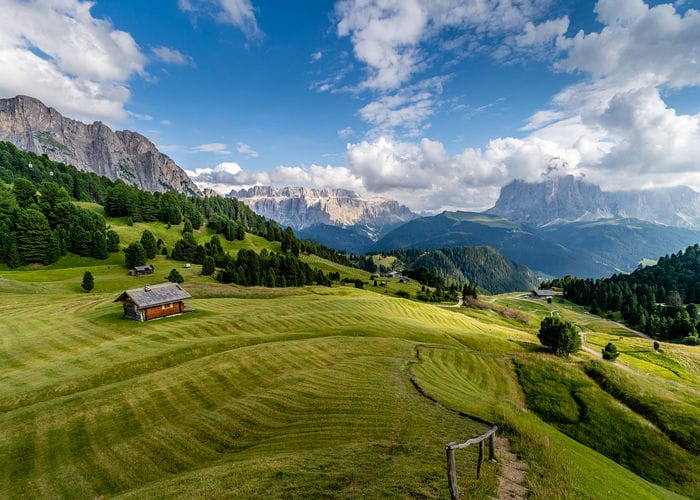
The Italian Alps - credits: Pixabay.com
Italy can experience varying weather conditions in February due to its diverse geography and latitude. The month typically brings cool, wet conditions and can vary significantly from north to south.
In Northern Italy, including cities such as Milan and Venice, temperatures can range from 25°F to 45°F (-4°C to 5°C).
Snowfall is possible during this period, particularly in the mountain regions such as the Alps and the Dolomites. It's essential to dress warmly and be prepared for winter weather conditions.
Central Italy, which includes cities like Florence and Rome, has more mild temperatures than the north. In this region, temperatures tend to fluctuate between 40°F and 55°F (5°C to 13°C).
Rain is also a common occurrence in Central Italy in February. The average daytime temperature in Rome is around 57°F (14°C), with nighttime lows dipping to 46°F (8°C).
Be sure to carry a comfortable, light rain jacket and an umbrella while venturing outdoors.
- Northern Italy
- Average Temperature: 25-45°F (-4-5°C)
- Weather: Snow and cold conditions
- Central Italy
- Average Temperature: 40-55°F (5-13°C)
- Weather: Mild, with occasional rain
Southern Italy, including cities like Naples and Palermo, experiences somewhat warmer climates in February.
The region sees average temperatures from 50°F to 60°F (10°C to 16°C). Although rain is not uncommon during this time, Southern Italy generally has clearer days than the rest of the country.
- Southern Italy
- Average Temperature: 50-60°F (10-16°C)
- Weather: Warmer and clearer
In terms of average rainfall during February, the country typically sees moderate amounts of precipitation, with Central Italy receiving a higher percentage compared to the north and the south. It's advisable to plan for potential wet weather and have the necessary gear on hand.
In conclusion, the climate in Italy during February features cool temperatures, varied weather conditions across the different regions, and moderate rainfall.
It's essential to pack suitable winter clothing and gear for unpredictable weather events and temperature fluctuations.
Northern Italy Weather in February
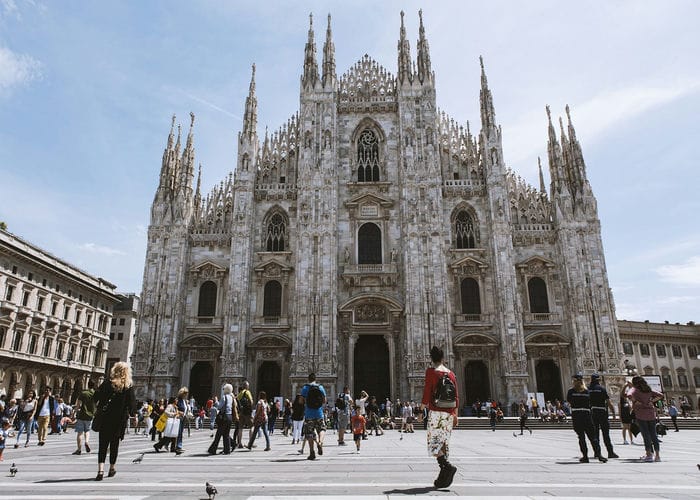
Temperature Ranges in Major Cities
In February, Northern Italy experiences chilly winter weather. The temperature in major cities like Milan usually ranges from 25°F to 45°F (-4°C to 5°C).
Meanwhile, in cities like Turin and Venice, you can expect temperatures to lie anywhere between freezing 32°F (0°C) and 50°F (10°C).
Due to its proximity to the Alps, cities in the Piedmont region may experience slightly colder temperatures. It's always advisable to check the current extended forecast before you pack for your trip.
Precipitation Patterns
Rain and snow are common occurrences, especially during mid-February in Northern Italy. Snowfall is particularly more likely in the Alps and the Dolomites.
However, snow is relatively rare in major cities like Milan but can occur occasionally, with higher chances in Turin and Venice.
In the event of snow in and outside the town center during the Venice Carnival (the February Carnevale), extra precautions may be necessary for visitors.
Here are the average precipitation levels for some key cities in Northern Italy during February:
City Precipitation (inches) Milan 3.5 Turin 3.1 Venice 2.4 Bologna 2.5 Genoa 4.7

Typical Weather Conditions
During February, Northern Italy's weather is generally cold and damp. Mornings can be quite frosty, leading to the formation of ice on roads and pavements.
As the day progresses, temperatures usually rise, and frost clears up. Although days can be sunny, overcast and cloudy skies remain dominant during this season.
In cities like Milan, fog is a common occurrence in winter. This may affect visibility for travelers and potentially disrupt transportation schedules.
It is essential to dress warmly and prepare for inclement weather when visiting Northern Italy in February.
In conclusion, February in Northern Italy is characterized by cold temperatures, occasional rain, and snowfalls in the Alps and the rolling green hills of the Dolomites.
The Venice Carnival takes place during this month, offering a unique experience for visitors despite the chilly weather.
Central Italy Weather in February

Temperature Ranges in Major Cities
In February, Central Italy experiences moderate temperatures, with average daytime temperatures varying between major cities.
In Rome, the capital city, daytime temperatures typically range from 40-55°F (5-13°C), while nighttime temperatures drop to around 8°C (46°F).
Florence has similar temperatures, with cooler nights in comparison to Rome.
City Daytime Temperatures Nighttime Temperatures Rome 40-55°F (5-13°C) 8°C (46°F) Florence 40-55°F (5-13°C) 4-6°C (39-43°F)
Precipitation Patterns
In February, Central Italy experiences moderate precipitation, and Rome usually sees an average of 81mm (3.2 inches) of rainfall throughout.
The number of rainy days varies from city to city, with approximately 7-10 rainy days per month.
- Rome: 81mm (3.2 inches) of rainfall
- Florence: 60mm (2.4 inches) of rainfall
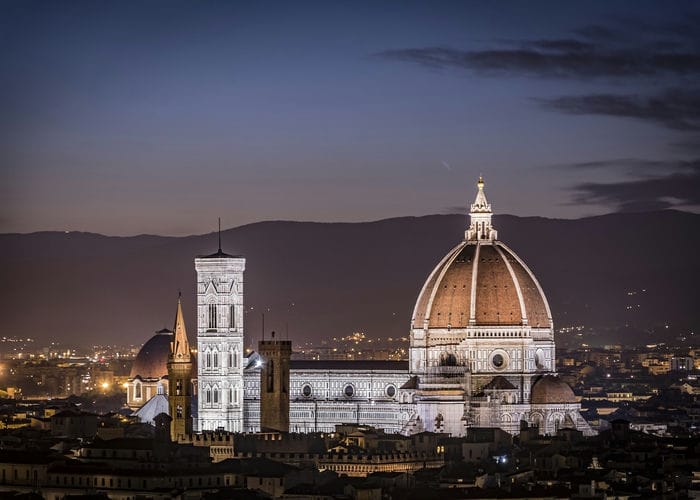
Typical Weather Conditions
During February, Central Italy experiences chilly and damp weather.
Overcast skies and intermittent rain are common throughout the month, but occasional sunny days provide the opportunity for outdoor activities and exploration.
Coastal areas tend to be slightly milder, while cities such as Rome and Florence can experience cold winds. Travelers to Central Italy during this month are advised to dress in layers and prepare for showers.
Due to the cooler weather and reduced number of visitors, this is an ideal time for visiting attractions in Central Italy, such as the Vatican Museums in Rome, without contending with large crowds.
Southern Italy Weather in February
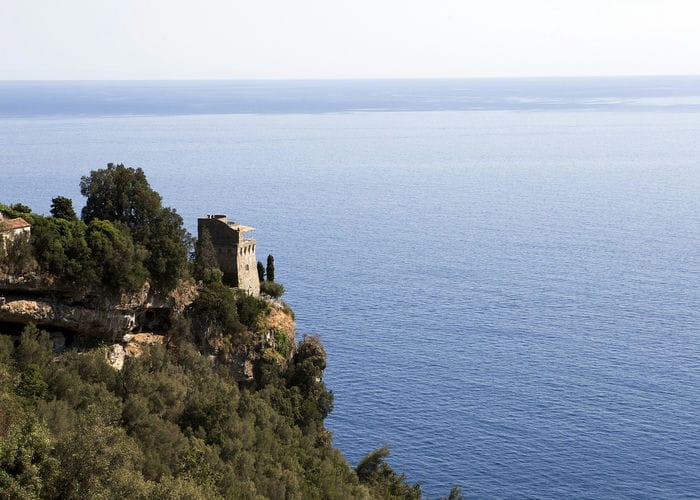
Temperature Ranges in Major Cities
In February, Southern Italy experiences cooler temperatures compared to the warmer summer months. The average temperature ranges for this region are:
- Naples: 50-60°F (10-16°C)
- Amalfi Coast: 50-60°F (10-16°C)
- Pompeii: 50-60°F (10-16°C)
- Sicily: 50-60°F (10-16°C)
Keep in mind that these averages can vary slightly depending on the specific location, altitude, and proximity to the coast.
Precipitation Patterns
Southern Italy is generally drier than its northern and central counterparts.
In February, cities such as Naples, the Amalfi Coast, and Pompeii can still experience some rain, but it is generally less frequent than in other regions of Italy.
On the other hand, the region with Saint Agatha as its patron saint, Sicily, and particularly its southern coasts, tend to be even drier, with annual precipitation levels of less than 300mm.

Typical Weather Conditions
Expect a range of weather conditions during February in Southern Italy. The coastal areas, such as the Amalfi Coast and parts of Sicily, are generally more mild and temperate due to their Mediterranean climate.
Inland locations like Pompeii can experience colder temperatures, particularly during the evenings and early mornings.
Although the weather is generally tolerable throughout Southern Italy during February, it is essential to come prepared with warm clothing and dress in layers, as conditions can vary greatly from day to day.
Coastal Regions Weather in February
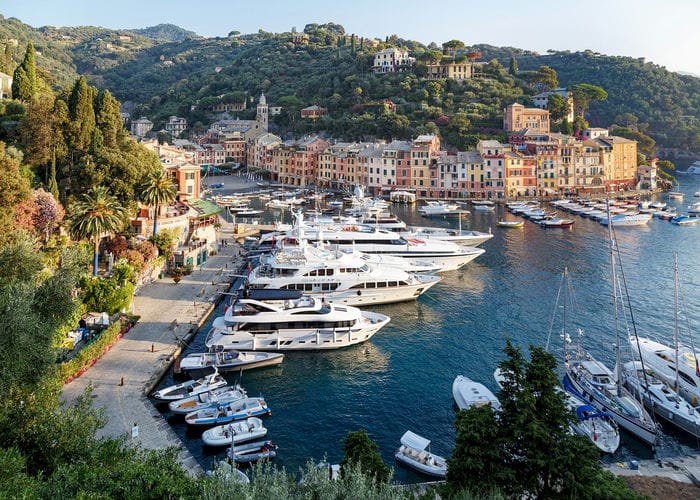
Portofino - credits: Pixabay.com
Influence of the Mediterranean Sea on Coastal Weather
The coastal regions of Italy experience a Mediterranean climate, which includes mild to cool winters. In February, the weather along the coast is influenced by the surrounding Mediterranean Sea.
The sea helps to moderate the temperature, and as a result, the coastal areas tend to have milder and pleasant weather when compared to the inland regions during this time of the year.
In Southern Italy, regions like Sicily and Sardinia can expect temperatures to reach highs of around 16°C (61°F) in February.
Coastal areas in Southern Italy generally have slightly milder temperatures compared to the inland parts of the region.
Specific Climate Patterns in Coastal Areas
Different coastal areas in Italy can have varied temperature ranges influenced by their specific geographic and climatic factors. Here are the temperature ranges for some key coastal regions in February:
- Central Italy: 40-55°F (5-13°C)
- Southern Italy: 50-60°F (10-16°C)
- Amalfi Coast: Air temperature between 8°C to 13°C (46°F to 55°F), Sea temperature around 15°C to 16°C (59°F to 61°F)
During February, rainfall tends to be moderate, with the possibility of some occasional showers. These factors contribute to typically tolerable and manageable weather conditions.
However, it is essential to keep an eye on the current extended forecast for your specific destination, as unseasonably cold or warm weather is always a possibility.
In conclusion, the coastal regions of Italy in February generally experience mild weather, with temperatures influenced by the Mediterranean Sea.
While variation exists among the different coastal areas, the overall climate is moderate and manageable for visitors.
Mountainous Regions Weather in February
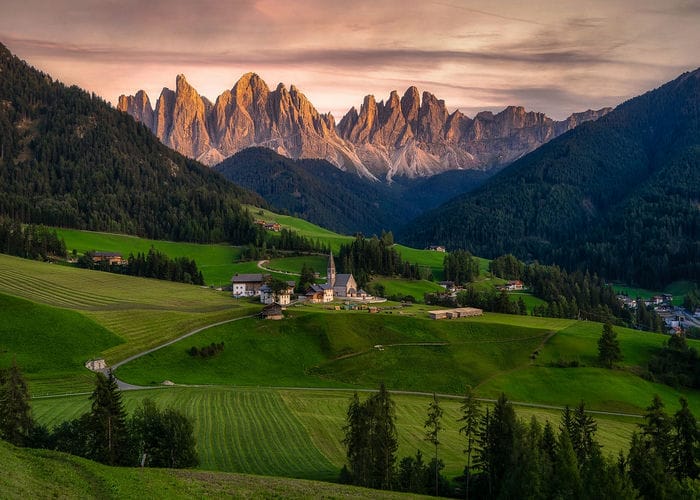
Impact of Altitude on Weather
In February, cold and damp weather conditions prevail in Italy. The mountainous regions in the north, such as the Alps and Dolomites, experience colder temperatures due to the higher altitude.
The average temperatures in these areas can range from freezing to 10°C (32-50°F), with snowfall being a common occurrence.
Higher elevations see much colder temperatures, while lower areas may experience milder winter weather. This makes for varying levels of snow conditions.
As you ascend, the snow tends to be more consistent and heavy, making it ideal for winter sports enthusiasts.
Snowfall and Skiing Opportunities
February is an excellent month for skiing in Italy's mountainous regions.
With colder temperatures and snowfall at this time of the year, mountain ski resorts come to life, offering a wide variety of winter sports and activities.
- Alps: Home to numerous ski resorts, the Alps offer a diverse selection of slopes suitable for beginners to advanced skiers. Some popular resorts include Courmayeur, Livigno, and Cervinia.
- Dolomites: Another skiing hotspot, the Dolomites are known for their dramatic landscapes and high-quality ski resorts.
- Visitors can venture to Val Gardena, Cortina d'Ampezzo, or Alta Badia to take advantage of the abundant snow in February.
Avid skiers and winter sports enthusiasts can enjoy the pristine slopes and vibrant scenery in both the Alps and Dolomites during February.
Snow conditions are often optimal, providing a fantastic experience for those looking to make the most of Italy's cold weather.
Historical Weather Patterns in February
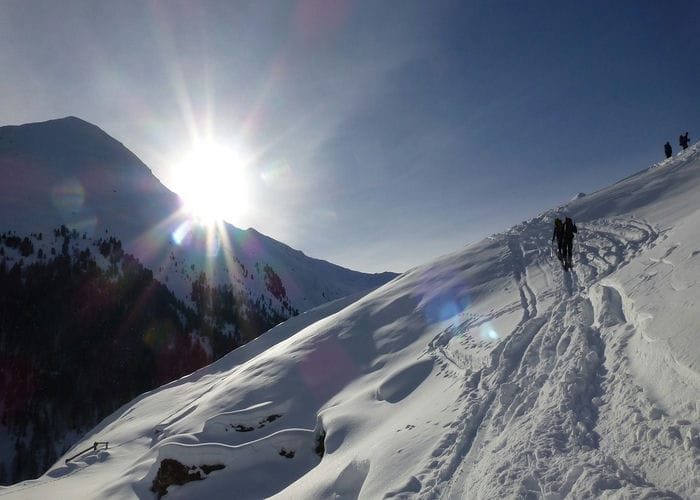
Italy experiences varying weather patterns during February, as the country stretches from the Mediterranean Sea to the northern Alps, which influences the climate dramatically.
Historically, the northern regions such as Milan, Turin, and Venice experience cold temperatures, ranging from freezing to 10°C (32-50°F), with snowfall being more likely in the Alps and the Dolomites.
In fact, February is the middle of the winter season in Italy, and the weather can be cold and moderately rainy.
Average temperatures in February are as follows:
- Rome: -4°C - 15°C (25°F - 59°F)
- Venice: -1°C - 8°C (30°F - 46°F)
- Naples: 4°C - 13°C (39°F - 55°F)
The southern regions, on the other hand, can be slightly warmer, with cities like Rome and Naples experiencing a milder climate.
However, temperatures still feel chilly, and there are chances of rain and snow in these areas as well.
In terms of precipitation, February sees rainfalls of up to 63 mm (2.5 inches) in Rome, 58 mm (2.3 inches) in Venice, and 56 mm (2.2 inches) in Naples.
It is common for travelers in Italy during this month to encounter slushy puddles and sporadic rain showers, making it essential to be prepared for such conditions.
Travel Tips for Visiting Italy in February

February in Italy marks the low season for travelers, which can be quite beneficial for savvy tourists.
At this time, you can expect thinner and fewer crowds around, lower hotel prices, and a unique cultural experience. However, it still requires some planning to make the most of your trip.
Packing Recommendations and Weather
Expect chilly temperatures ranging from 28° to 40° F (-2° to 4° C) during February. When packing, be sure to bring warm clothing such as sweaters, scarves, and a weatherproof jacket.
It may also be helpful to include an umbrella and comfortable shoes designed for winter weather and walking.
Valentine's Day in Italy
Spending Valentine's Day in Italy can be quite a romantic experience. Italian cities like Rome and Venice are known for their idyllic charm and beautiful scenery.
During this time, you can find Valentine-themed events and special offers at various restaurants and hotels to celebrate the occasion with your loved one.
Hotel Prices and Low Season
One of the key benefits of visiting Italy in February is the low hotel prices due to the low travel season. Travelers can often find discounts of 50% or more compared to the high season.
However, these discounts may not be available in mountainous regions with ski resorts, where winter sports attract a high number of tourists.
Best Time to Explore Italy
The low season during February can be the best time to visit Italy at a relaxed pace.
The thinner crowds make popular Italian attractions like the Colosseum, the Leaning Tower of Pisa, and other UNESCO World Heritage Sites more accessible and enjoyable.
Additionally, cultural events, such as the Venice Carnival, offer unique experiences in February.
Sample Itinerary for Italy in February
To make the most of your February visit to Italy, consider the following sample itinerary:
- Rome (2 days) - Explore the historic sites like the Coliseum and Vatican City. Be sure to indulge in some authentic Italian cuisine.
- Florence (2 days) - Immerse yourself in art with visits to the Uffizi Gallery and Accademia Gallery. A stroll through the stunning streets of this Renaissance city is also highly recommended.
- Venice (1 day) - A gondola ride through the canals of this enchanting city is a must-do, and be sure to experience the Venice Carnival if you're visiting in February.
Final Thoughts on the Weather in Italy in February

February can be a rewarding time to visit Italy or Greece, with lower hotel prices and reduced crowds.
Be prepared for the chilly weather and experience the unique cultural events and attractions the country has to offer during this time. It will be a trip of a lifetime!
For more information regarding your trip to Italy, from how many days you need in Italy and advice on tipping in Italy to guides for Italy for families and Italy with kids, read our blog and conquer this magical Mediterranean country!






